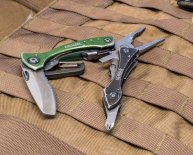
Medieval times Swords
Different Types of Medieval Swords
The different types of Medieval swords ranged from the smallest Broadsword measuring from 30 inches to the Greatswords which measured up to 72 inches. The weight of Medieval swords are usually presumed to be a lot heavier than they actually were! Facts and a description of the different types of Medieval swords follow. For full details click on the appropriate link.
- The Broadsword - The earliest of the Medieval swords from the 6th Century. The Broadsword had a two-edged blade measuring 2-3 inches wide at the base and tapering to a point. The length of the Broadsword ranged from 30 - 45 inches and weighed between 3 - 5 pounds
- The Falchion Sword - A Falchion sword was favoured by some Medieval Knights who had been on Crusade. This sword was similar to a heavy scimitar. The Medieval Falchion swords had a short, heavy blade with a single edge
- The Greatsword - The Greatswords were large two-handed swords. The length of the Greatsword ranged from from 50 to 72 inches, with a handle that measured 18 - 21 inches in additional length. Greatswords weighed between 6 - 10 pounds. The Greatsword featured an extended handle that allowed the blade to be used in two hands
- The Longsword aka as the Bastardsword - Longswords (Bastardswords) are also known as Hand and a Half swords. The length of the Longsword (Bastardsword) ranged from from 44 to 50 inches in length.
- The Scimitar - The scimitar was a type of sword most commonly associated with the Saracens in the Holy Land who fought against the Crusaders. Scimitars had a distinct curved blade ending with a sharp point
- The Cutting sword - These swords were at first used by early Medieval Knights and were also particularly favoured by the the Vikings. A slashing stroke would be used but this became ineffective against heavy body armour
Medieval Swords Training
Skill in the use of Medieval weapons and understanding the strategy of Medieval Warfare was necessary and a played a vital part in Medieval life. The training required by a Knight to use Medieval Swords was extremely time consuming - it was necessary for them to become expert Medieval Swordsmen. Special places were assigned for the Medieval Swords training called the Pell. Pell training allowed knights to practise various vicious strokes and manoeuvres with their Medieval Swords such as thrusting, cutting, and slicing without imposing an injury on his opponent.
Medieval Training Swords - Batons
Knights in Training Combats used swords called batons. A sword training combat was settled by either a set number of counted blows, or until one or both combatants had been “satisfied” i.e. had enough. Certain blows or manoeuvres using the training swords, batons, were allocated set numbers of points.
- Thrusts to the body, shoulder and face counted as three points
- An immobilization or disarm was counted as three points
- Thrusts to the rest of the body or wrists counted for one point
- Strikes made with the use of the pommel or quillon also counted for one point
Decoration of Medieval Swords
A Medieval sword also held great symbolic importance and featured strongly in the formal Ceremony of Knighthood. This symbolic meaning was even illustrated in the Medieval swords design as the crossguard (quillion), formed across the handle of the sword, resembled a Christian cross. Giving a Knight the 'Right' to use the sword in defence of the Christian religion. Medieval swords also featured some form of engraving. The engravings on Medieval Swords might include the sword owner's name and words from a prayer. Engravings might also be purely decorative and embellished with the inclusion of jewels.
Names of different parts of Medieval Swords
The names of the different parts of a Medieval sword are as follows together with facts and information about their history:
- The Blade - The blades of Medieval swords which were used in England were usually straight with two sharpened edges. The history of Blades shows that they were first made of Bronze, then iron and culminating in the steel Medieval swords
- The Crossguard or Quillion - This was the handle of the sword resembling the shape of the Christian cross. Expensive to produce and sometimes covered in precious metals - bronze, silver or gold
- The Edge - The cutting part of the blade. Medieval swords were designed to be used for blows directly against the opponent's body or shield and in the edge to edge style of sword fighting
- The Forte - The strongest part of the swords blade, nearest the hilt
- The Fuller - The central shallow on a straight double edged blade - also referred to as the 'Blood Gutter'!
- The Grip - The hilt of swords held in the hand of the Knight. The Grip was often made of horn or wood, covered in leather and contoured to fit in the hand

















